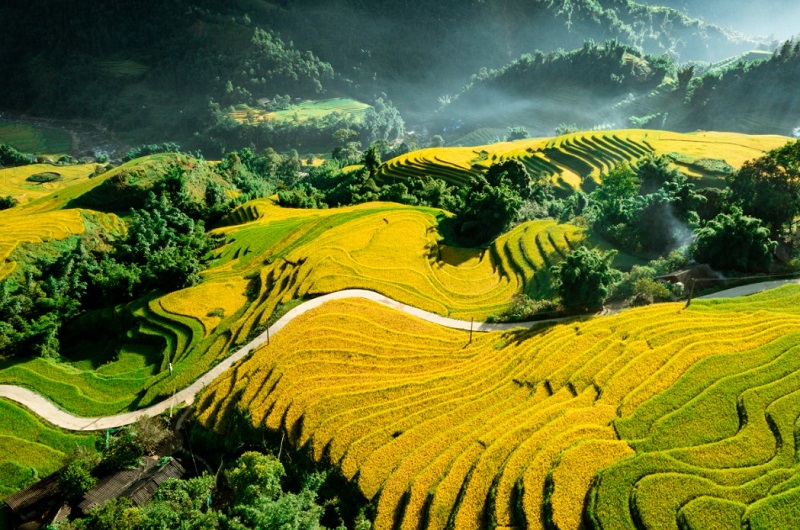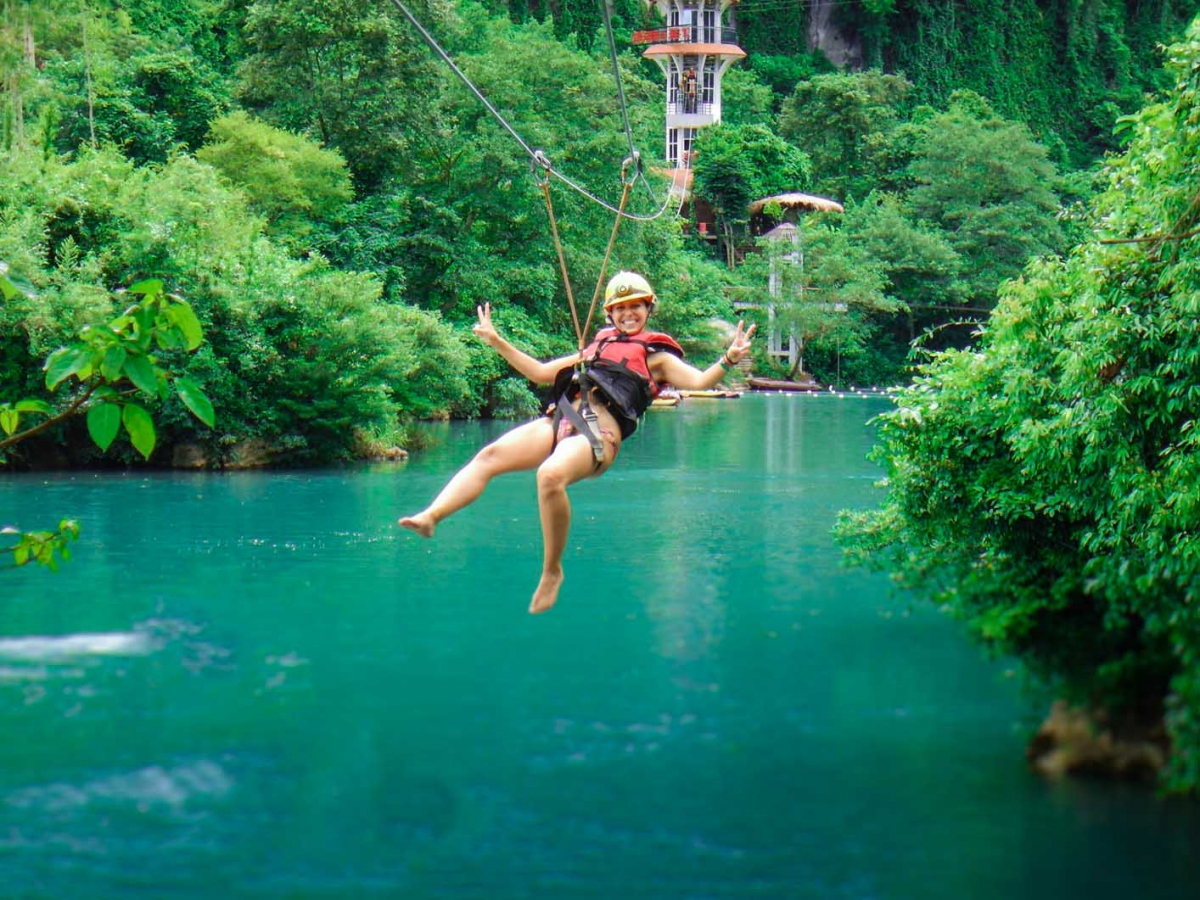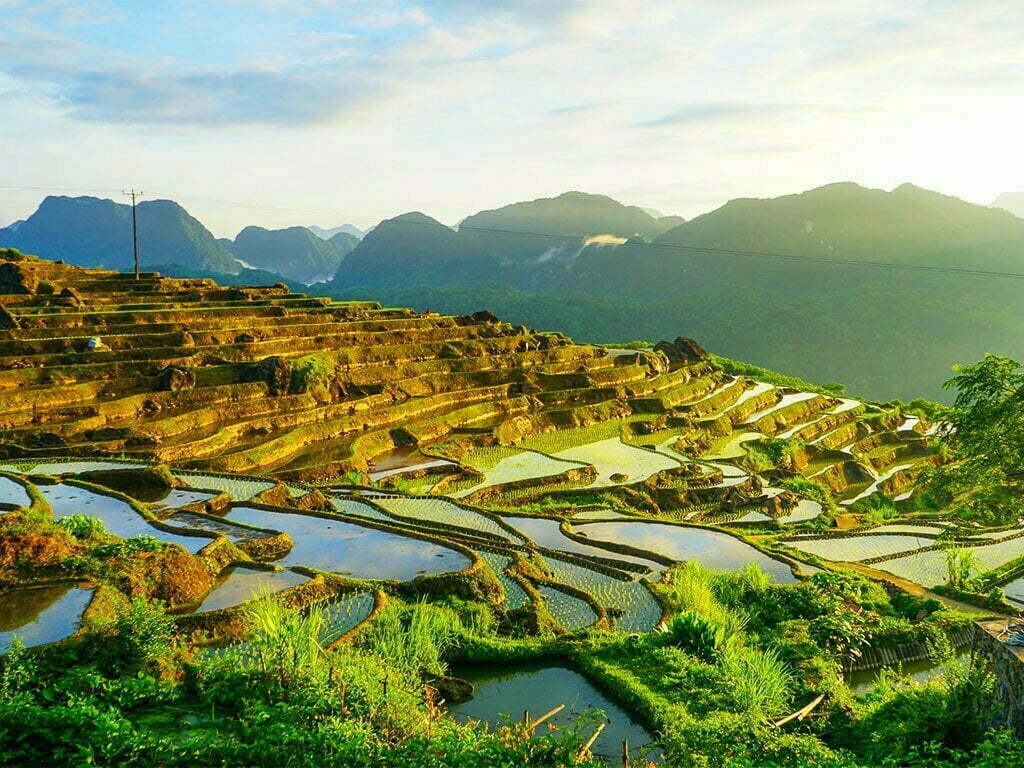
Hiking in Vietnam, where to go?
Vietnam, with its diverse terrain of mountains, rainforests, and coastal regions, offers a wealth of opportunities for unforgettable hiking experiences. From challenging treks to leisurely strolls, discover some of the most breathtaking hiking destinations in this captivating country.

The development of hiking in Vietnam
Hiking in Vietnam has seen significant growth in recent years, fueled by a growing interest in adventure travel and a recognition of the country’s stunning natural beauty.
Early Development of hiking in Vietnam:
- Historical Roots: Hiking has always been a part of Vietnamese life, with people traversing the countryside for centuries for various reasons – from daily commutes to accessing remote villages.
- Limited Tourism Focus: While hiking has been a part of local life, it wasn’t initially a major focus for tourism.
Recent Growth:
- Adventurous Tourism: The rise of adventure tourism globally has spurred a growing interest in hiking destinations worldwide, including Vietnam.
- Government Support: The Vietnamese government has recognized the potential of adventure tourism and has been actively promoting hiking and trekking as key attractions.
- Infrastructure Development: Improved infrastructure, such as better roads and accommodation options, has made it easier for tourists to access remote hiking destinations.
- Growing Awareness: Increased media coverage and social media sharing have helped to raise awareness of Vietnam’s stunning hiking trails and destinations.
Current Trends of hiking in Vietnam:
- Focus on Sustainability: There’s a growing emphasis on sustainable tourism practices, with a focus on minimizing environmental impact and supporting local communities.
- Community-Based Tourism: Many hiking trails are now managed by local communities, providing economic benefits to the local population.
- Diverse Offerings: Vietnam offers a wide range of hiking experiences, from easy day hikes to challenging multi-day treks, catering to different skill levels and interests.
Key Factors Contributing to the Growth of Hiking in Vietnam:
- Stunning Natural Beauty: Vietnam boasts diverse landscapes, including rugged mountains, lush rainforests, picturesque rice terraces, and pristine beaches, offering a wealth of hiking opportunities.
- Cultural Immersion: Hiking in Vietnam often provides opportunities for cultural immersion, allowing travelers to interact with local communities and experience their way of life.
- Affordable Prices: Compared to many other popular hiking destinations, Vietnam offers excellent value for money, making it an attractive option for budget-conscious travelers.
The development of hiking in Vietnam is an ongoing process. With continued investment in infrastructure, a focus on sustainability, and a commitment to preserving the natural environment, hiking is poised to become an even more significant contributor to the country’s tourism industry.
Top places to go hiking in Vietnam
Vietnam offers a diverse range of hiking experiences, from challenging mountain treks to leisurely strolls through picturesque landscapes. Here are 5 of the top places to go hiking in Vietnam:
Sapa (Lao Cai):

- Why go: Stunning rice terraces, diverse ethnic minority villages (H’mong, Dao, Zay), and challenging treks up Fansipan, the highest peak in Indochina.
- Highlights: Trekking through villages, encountering local culture, breathtaking mountain scenery.
Phong Nha-Ke Bang National Park (Quang Binh):

- Why go: Explore the dramatic karst landscape, hike through lush jungles, and visit the impressive Phong Nha and Son Doong caves (the world’s largest).
- Highlights: Cave exploration, jungle trekking, unique and awe-inspiring natural formations.
Ha Giang Loop:

- Why go: Ride or hike along the legendary “Dong Van Karst Plateau Road,” a challenging but rewarding route with breathtaking mountain scenery, rugged landscapes, and unique ethnic minority villages.
- Highlights: Dramatic mountain scenery, cultural encounters with local people, challenging but rewarding ride/hike.
Cat Ba National Park (Hai Phong):

- Why go: Hike through lush jungle trails, explore hidden beaches, and enjoy stunning views of the Halong Bay archipelago.
- Highlights: Island trekking, beautiful beaches, opportunities for kayaking and other water activities.
Pu Luong Nature Reserve (Thanh Hoa):

- Why go: Experience authentic rural life, hike through scenic rice paddies and bamboo forests, and relax in a peaceful and tranquil setting.
- Highlights: Stunning rice terraces, rural village life, opportunities for homestays and cultural exchange.
This is just a small selection of the many fantastic hiking destinations in Vietnam. With its diverse landscapes and rich cultural heritage, Vietnam offers something for every type of hiker, from casual day trips to challenging multi-day adventures.
Hiking in Vietnam: A guide
1. Planning & Preparation for hiking:
- Choose the Right Hike:
- Consider your fitness level: Start with easier trails and gradually increase difficulty.
- Research the trail: Check reviews, elevation gains, and trail conditions.
- Choose the right season: Avoid rainy seasons as trails can become muddy and slippery.
- Gear Up:
- Footwear: Sturdy hiking boots are essential. Break them in before your trip to avoid blisters.
- Clothing: Pack layers, including a rain jacket, and lightweight, breathable clothing.
- Essentials: Pack a daypack with essentials like water, snacks, sunscreen, insect repellent, a first-aid kit, a map, and a compass (or GPS device).
- Fitness Level: Prepare for your hike by incorporating regular exercise into your routine, such as cardio and strength training.
- Book Accommodation (if necessary): If you’re planning a multi-day trek, book accommodation in advance, especially during peak season.
2. During the Hike
- Stay Hydrated: Drink plenty of water throughout the day, even if you don’t feel thirsty.
- Pace Yourself: Start slowly and gradually increase your pace. Take regular breaks to rest and enjoy the scenery.
- Listen to Your Body: If you’re feeling unwell, stop and rest. Don’t push yourself too hard.
- Protect Yourself from the Sun: Wear sunscreen, a hat, and sunglasses to protect yourself from the strong Vietnamese sun.
- Respect the Environment: Stay on marked trails, avoid littering, and minimize your impact on the natural environment.
- Interact with Locals: Be respectful of local customs and traditions. Learn a few basic Vietnamese phrases to enhance your interactions with locals.
3. After the Hike
- Rest and Recover: Allow your body time to recover after a strenuous hike.
- Reflect and Enjoy: Take time to reflect on your experience and enjoy the memories you’ve created.
- Support Local Communities: Consider staying in homestays, eating at local restaurants, and purchasing souvenirs from local artisans to support the local economy.
Important Notes:
- Hire a Guide: For challenging treks or if you’re unfamiliar with the area, consider hiring a local guide. They can provide valuable insights, ensure your safety, and help you connect with the local community.
- Check Weather Conditions: Be aware of the weather forecast and adjust your plans accordingly. Avoid hiking during periods of heavy rain or thunderstorms.
- Respect Local Customs: Dress modestly when visiting villages and temples.
- Learn Basic Vietnamese Phrases: Knowing a few basic Vietnamese phrases can enhance your interactions with locals and enrich your travel experience.
By following these tips, you can ensure a safe, enjoyable, and rewarding hiking experience in Vietnam. Remember to prioritize safety, respect the environment, and embrace the unique cultural experiences that this beautiful country offers.
See also: TOP 10 Highest Vietnam mountains: A Trekker’s Paradise
